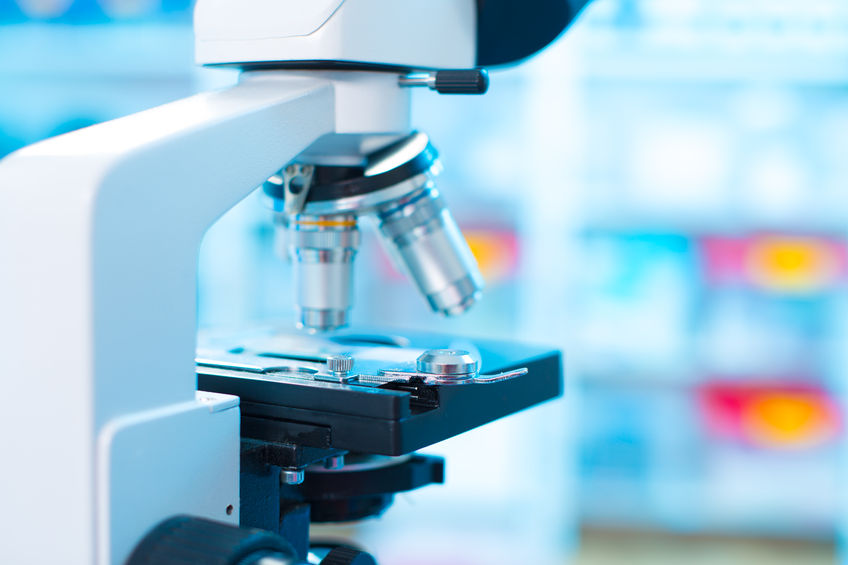
LH and Testosterone
Also known as Lh And Testosterone BloodWhat is this test?
LH and Testosterone blood test measures the amount of luteinizing hormone and testosterone in the blood to ensure a healthy reproductive system.
What is LH?
Luteinizing hormone is produced by the pituitary gland. It affects the sex organs in both men and women during sexual development. In women, LH works with follicle stimulating hormone (FSH) to stimulate the ovarian follicle to produce the female sex hormone, estrogen. The rise in estrogen stimulates the release of more LH. This cause the ovarian follicle to release the mature egg from the ovary, a process called ovulation and turns the remnants of the follicle into a corpus luteum. If fertilization occurs, the LH stimulates the corpus luteum to produce progesterone. Progesterone is an essential hormone needed to maintain pregnancy. If fertilization does not occur the levels of progesterone drop off leading to the beginning of the next cycle. Thus this hormone plays an important role in menstruation, ovulation, and puberty.
In men, LH hormone binds to receptors in Leydig cells present in the testes. This hormone stimulates the production of testosterone from these cells that are necessary for the production of sperms. Therefore, LH plays a major role in regulating the function of testes in men. This hormone plays an important role in puberty and fertility.
What is Testosterone?
Testosterone plays an important role in the facilitation of spermatogenesis. Testosterone stimulates the development of secondary sexual characteristics in men like the growth of the body hair, deepening of the voice, enlargement of the penis (sex organ in men), muscle development. In women, testosterone is converted to the main female sex hormone i.e:-Estradiol. Testosterone production is high in the early morning hours from about 4-am to 8-am and low in production from about 4-pm to 8-pm. Production of testosterone is rapidly high at the onset of puberty and starts to drop at the age near to 30.
Why this test is performed?
The doctor may ask to perform this test if an individual is suffering from symptoms like underdevelopment of muscle in puberty, lack of body hair, enlarged breasts, low energy levels, slow growth of hair, hair loss, loss of bone mass, underdeveloped male genitals (penis), irregular or missed periods, unusual body hair growth in women, heavy vaginal bleeding, increase in body fat. The doctor may tell an individual to take this test if he/she is suffering from infertility. If an individual is on the treatment of testosterone medications, then the doctor may ask to perform this test to evaluate and to check the effectiveness of the treatment and LH and testosterone levels in the body. This helps the doctor to rule out the patient disease condition. Generally, when a patient is diagnosed with the testicular dysfunction visits hospital for a general check-up, the doctor may ask to undergo LH and Testosterone test which gives a better status of the condition.
Test Preparation
Inform your doctor if you are on any medications, have any allergies or underlying medical conditions before your LH and Testosterone. Your doctor will give specific instructions depending on your condition on how to prepare for LH and Testosterone.
No specific preparation is required for this test.
Understanding your test results
In women, the increased levels of LH indicate a condition called primary ovarian failure, where the ovaries fail to work properly themselves. There are many causes for this condition such as autoimmune disorders, ovarian tumors, Turner syndrome (a genetic abnormality), polycystic ovary syndrome, adrenal or thyroid disease etc. In women whose ovaries are not properly developed, who use chemotherapy medicines, or have exposure to radiation therapy also shows increased levels of LH. Decreased levels of LH indicate a condition called secondary ovarian failure. This condition is due to the problem with pituitary or hypothalamus glands. This fails to stimulate the ovaries and ovarian function leading to ovulatory problems.
In men, the increased levels of LH indicate a condition called primary testicular failure, where the gonads fail to work properly themselves. There are many causes for this condition such as autoimmune disorders, germ cell tumors, Klinefelter syndrome (a genetic abnormality), viral infection such as mumps, trauma etc. In men whose gonads are not properly developed, who use chemotherapy medicines, or have exposure to radiation therapy also shows increased levels of LH. Decreased levels of LH indicate a condition called secondary testicular failure. This condition is due to the problem with pituitary or hypothalamus glands. This fails to produce sufficient male sex hormone testosterone affecting the development of male characteristics and fertility. Lack of sexual drive, fatigue, low muscle mass, sexual dysfunction is common in men with low testosterone levels.
In children, the increased levels of LH indicate too early puberty (Precocious puberty). This condition is more in girls than boys. The causes of this condition are a central nervous system tumor or infection or inflammation, brain surgery, trauma, brain injury, etc. In delayed puberty, LH levels can be normal or lower than what is expected for youth within their age group. There are many causes for this condition such as hormone deficiency, Klinefelter syndrome (a genetic abnormality), Turner syndrome (a genetic abnormality), ovarian or testicular failure, cancer, chronic infection, an eating disorder etc. Normal prepubescent levels of LH in children may indicate a condition called precocious pseudopuberty. This can be due to adrenal gland tumors, testicular tumors, ovarian tumors, or hormone-secreting tumors.
In the case of increased Testosterone in the blood than the normal range then it may be due to early puberty in young men, acne, high libido (hypersexuality), infertility (not getting pregnant), steroid abuse, tumors in testes, decreased sperm count, high blood pressure, high red blood cell count, aggression, treatment with testosterone medications, polycystic ovarian syndrome (enlarged ovaries with small cysts on the outer edges).
If the level of Testosterone is less than the normal range then it may be due to hypogonadism (failure of the testes in men and ovaries in women to function properly), testicular failure, pituitary disorders, Klinefelter syndrome (genetic disorder in which a male is born with an extra copy of the X chromosome), obesity, adrenal cancer, ovarian cancer, high levels of stress, major surgery.
| Gender | Age groups | Value |
| UNISEX | All age groups | 2 - 18 mIU/ml |
| MALE | All age groups | 270 - 1070 ng/dl |
| FEMALE | All age groups | 8 - 60 ng/dl |

